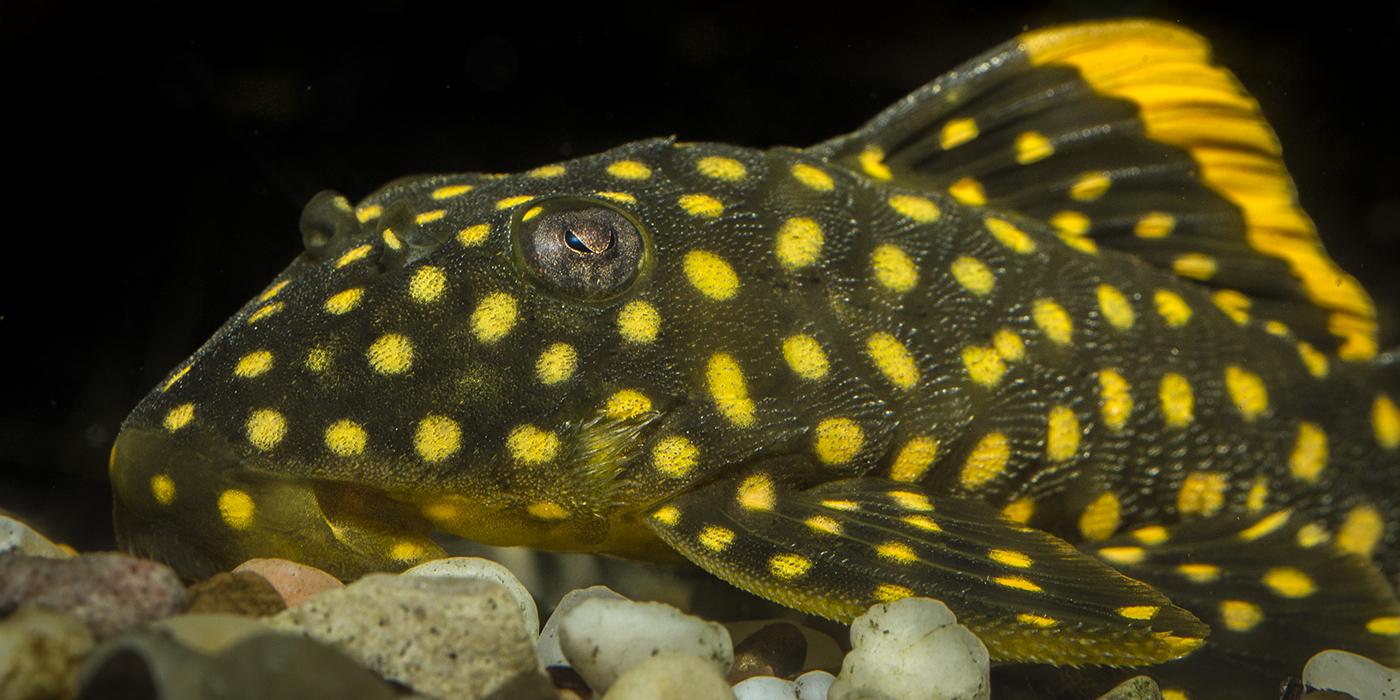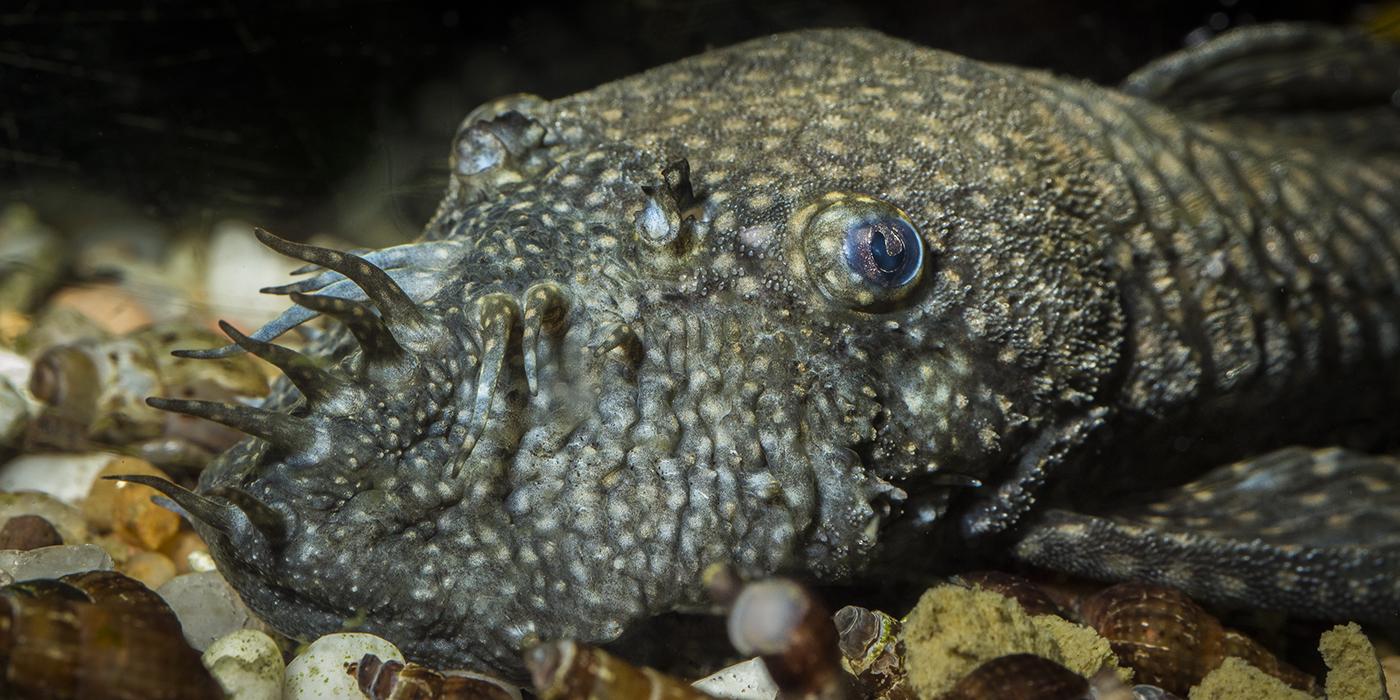Physical Description
Plecostomus coloration can vary depending upon their surroundings and environment. They are sometimes adorned with black spots of various sizes on a sand-colored body but can also be a dusky, dark brown. This species is not sexually dimorphic.
With the exception of their bellies, large, bony plates cover the entire body. This species has a prominent dorsal fin and one set of barbules. The name plecostomus translates from Latin to "folded mouth," referring to the suction-cup-like mouth of this catfish, which is located underneath the head.
Size
These bony catfish can grow to 20 inches in length.
Native Habitat
Plecostomus catfish are found in the fresh and brackish water of the Guianan coastal drainages of Brazil and Venezuela, as well as in Rio de la Plata between Uruguay and Argentina. They prefer fast-flowing streams and rivers with pebbly substrate.
This species is considered to be extremely adaptable and has been identified in the Gulf of Mexico, presumably introduced by aquarists. They are considered invasive in Texas.
Lifespan
The average lifespan for plecostomus is 10 to 15 years.
Food/Eating Habits
Opportunistic omnivores, plecostomus will feed on algae, plants, invertebrates and small fish. They are sometimes referred to as "janitor fish" among aquarists for their ability to clean tank algae. Their diet at the Smithsonian's National Zoo is a gel diet that also includes fresh produce.
Sleep Habits
Plecostomus are primarily nocturnal and will spend daytime hours resting along the benthos in dark crevices.
Reproduction and Development
Plecostomus are oviparous, or egg-laying, and create nesting chambers by digging tunnels in mud banks or occupying naturally occurring caves made from driftwood or rocks. Males guard eggs.
Conservation Efforts
Plecostomus are thought to be common in their natural habitat.
Help this Species
- Organize or attend a stream, river, lake or other waterway cleanup in your area to preserve aquatic habitats for local species.
- Avoid single-use plastics, such as plastic bottles, bags and utensils. Choosing reusable options instead can help reduce plastic pollution.
- Protect local waterways by using fewer pesticides when caring for your garden or lawn. Using fertilizers sparingly, keeping storm drains free of litter and picking up after your pet can also improve watershed health.
- Save water by switching to low-energy appliances, fixing leaks and turning off faucets when they aren't in use.
Animal News

Leaf-tailed Gecko Treated for Skin Cancer With Chemotherapy




